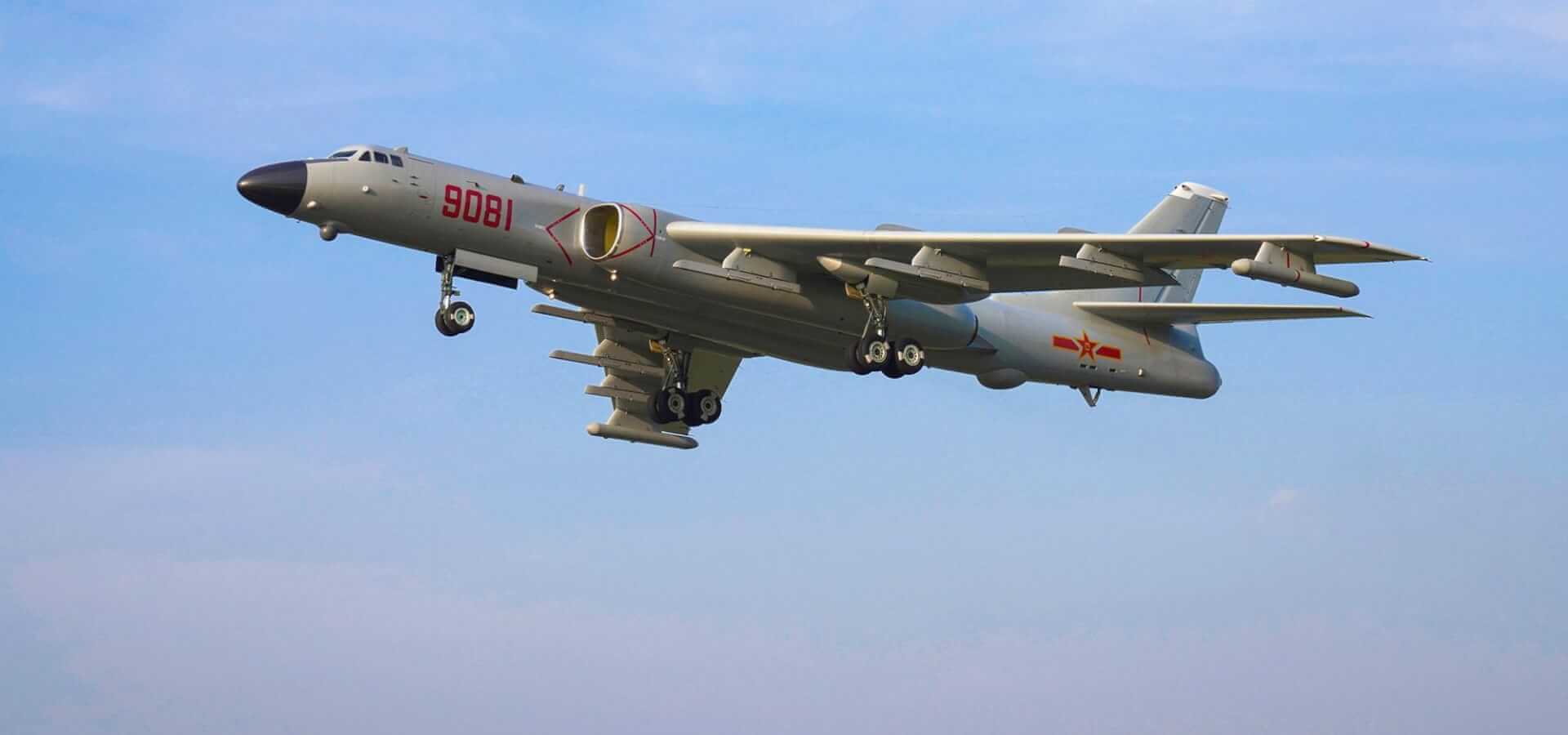Taiwan’s Ministry of National Defence confirmed on Friday that 18 Chinese military aircraft had entered its air defence identification zone (ADIZ), marking the second-largest incursion of the year.
The sortie, which included fighters and bombers, prompted the island’s air force to scramble jets in response. Taipei’s defence ministry said the Chinese aircraft crossed into the island’s ADIZ on Friday, forcing it to scramble Taiwanese aircraft and deploy air defence missile systems to track the Chinese planes.
18 PLA aircraft (Y-8 ASW, KJ-500 AEW&C*2, H-6*2, J-11*6, Y-8 EW and J-16*6) entered #Taiwan’s southwest ADIZ on May 6, 2022. Please check our official website for more information: https://t.co/KXaD0oacG7 pic.twitter.com/1qNVY3BTip
— 國防部 Ministry of National Defense, R.O.C. 🇹🇼 (@MoNDefense) May 6, 2022
The latest incident underscored how China’s sortie to the island is becoming increasingly advanced. The latest batch included six J-11 fighter jets, six J-16 fighter jets, two Xi’an H-6 bombers that are capable of carrying nuclear weapons, two KJ-500 airborne early warning and control aircraft, one Shaanxi Y-8 anti-submarine warfare plane, and one Shaanxi Y-8 electronic warfare aircraft, Central News Agency reported.
Taiwan, which is claimed by China as its own territory, has repeatedly complained of such missions by the Chinese military, which have become a common occurrence over the past two years. Last October, Taiwan reported one of the largest incursions by the Chinese air force, with around 93 military planes flying into its ADIZ over the course of five days. Similar large-scale incursions took place in September 2020, January 2021, and November 2021, to name but a few instances.
The biggest incursion into the ADIZ this year took place back in January, when 39 warplanes were spotted.
Grounding order lifted? Taiwan has started reporting PLAN KQ-200 (GX-6) ASW/MPAs near its ADIZ after just over 2 months of absence. One showed up May 3 and the type has been noted daily since then. pic.twitter.com/JSQl8SxpXZ
— Mike Yeo 杨启铭 (@TheBaseLeg) May 9, 2022
While China’s defence ministry is yet to comment on the latest incident, Chinese military expert Song Zhongping told the Chinese state-owned media outlet Global Times in an earlier interview that “the increasing scale of exercises is normal and routine” because the People’s Liberation Army needs to increase its deployment “to deter armed forces on the island and foreign interference from other nations.”
There are heightened fears that China could attempt to take advantage of the fact that international attention and efforts have been somewhat diverted by the Ukraine crisis, and seek to take similar action in Taiwan. Although China and Taiwan have both vehemently and repeatedly dismissed such comparisons, Taiwan’s military strategists have been studying Ukraine’s resistance in the hopes of formulating their own battle strategy for a potential Chinese invasion. Pointing to Ukraine’s ability to leverage fighting on its home ground to its advantage, the island’s defence ministry said in a statement that its forces have already been incorporating “asymmetric warfare” into their own planning. Moreover, the government is also considering extending compulsory military service beyond the current four months, Defence Minister Chiu Kuo-cheng said last week.
6 PLA aircraft (Y-8 ASW, KJ-500 AEW&C, H-6*2, KA-28 ASW and Y-8 EW) entered #Taiwan’s southwest ADIZ on May 5, 2022. Please check our official website for more information: https://t.co/F7nkT1mNQF pic.twitter.com/zwy7yTyc2o
— 國防部 Ministry of National Defense, R.O.C. 🇹🇼 (@MoNDefense) May 5, 2022
The island has also been making efforts at military modernization with precision and long-range weaponry to defend itself against a possible attack from mainland China. To this end, the United States (US) has been pushing the Taiwanese government to order US-made weapons that would help its military counter a seaborne invasion by China.
However, just last week, Taiwan’s Defence Ministry announced that it is considering alternative precision and long-range alternative weapons systems options after the United States informed it of a delay in the delivery of the 40 155mm M109A6 Medium Self-Propelled Howitzer artillery system due to a “crowded” production line. The two countries tentatively agreed on a $750 million deal for the howitzers last year. They were expected to be delivered by 2023 but this has now been pushed back to 2026. Among its options, Taipei said that it is considering truck-based HIMARS rocket launchers manufactured by Lockheed Martin Corp. An order for Stinger anti-aircraft missiles has also been delayed.
China, meanwhile, has emphasised that the guide, as well as the island’s regular military drills, are “futile” because of the mainland’s “overwhelming capabilities.”
Hu Xijin, the former editor of the state-owned media house Global Times, recently warned, “China will demonstrate its sovereignty over the island of Taiwan through military means…we will tie a noose around the neck of Taiwan secessionists and gradually tighten it.”

